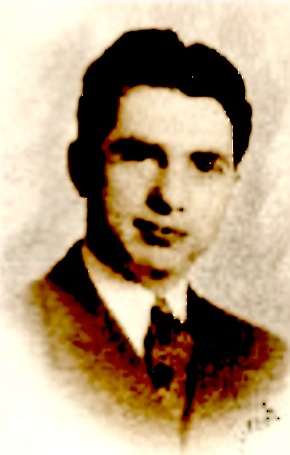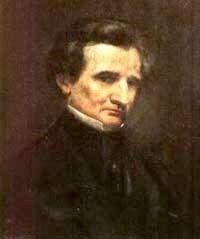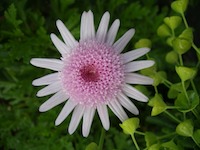Dexter Gordon radioblog
If you love Dexter Gordon, then you need to go get an earful of the great Dex at the Freedom Jazz Dance site. Host Ken Hohman presents 2 hours of Dexter Gordon which you can stream off his site.
One of my favorite players, there's always a hint of sensuousness in his big tone. A true master.
Nice way to celebrate Gordon's birthday, which happens tomorrow. He would have been 85.
You can also see Gordon on this youtube clip, playing soprano sax.
![]()
Saxophone New Works Wiki update
A little update on how things are going at the Saxophone New Works Wiki.
A full alphabetical listing of composers is now up.
Individual pages are starting to appear. Recent additions include:
Eryck Abecassis, Kees van Baaren, Lauren Bernofsky, Steven Burke, Leonello Capodaglio, Ricardo Dal Farra, James Duhamel, Michael Gurevich, Colin Homiski, Jacques Ibert, C. R. Kasprzyk, Mark Knippel, Teo Macero, James Matheson, Laurent Mettraux, Lior Navok, Étienne Saur, Allen Strange, Adam Taylor, Jim Theobald, Henri Tomasi.
Thanks to a growing number of contributors, this is becoming more and more interesting. Among the more interesting aspects are the numerous links to audio clips and composer web sites.
![]()
Teo Macero, R.I.P.
Macero recordings
Just learned that Teo Macero (1925-2008) has died in Riverhead, NY. He was 82.
After graduating from the Juilliard school in 1953, Macero became a member of the Charles Mingus's Jazz Composers Workshop, recording with Mingus between 1953-55 playing tenor and baritone saxophones. With Mingus, Teddy Charles, and Gunther Schuller, he became interested in what would become known as the third stream, ie. combining elements of classical music and jazz. He wrote several atonal classical works that showed his jazz influence.
He is an Emmy Award winning film and television composer and was instrumental in developing Miles Davis fusion movement.
Ben Ratliff of the New York Times writes:
"Helping to build Miles Davis albums like “Bitches Brew,” “In a Silent Way” and “Get Up With It,” Mr. Macero (pronounced TEE-oh mah-SEH-roh) used techniques partly inspired by composers like Edgard Varèse, who had been using tape-editing and electronic effects to help shape the music. Such techniques were then new to jazz and have largely remained separate from it since. But the electric-jazz albums he helped Davis create — especially “Bitches Brew,” which remains one of the best-selling albums by a jazz artist — have deeper echoes in almost 40 years of experimental pop, like work by Can, Brian Eno and Radiohead.
Coltrane's Naima
Just for the heck of it ! (Do I really need a better reason ?)
Here's a link to a John Coltrane 1957 performance of his Naima on Youtube.
![]()
Leon Stein Quintet, 50 years ago

Leon Stein's Quintet for Saxophone and String Quartet was premiered on this date in 1958, 50 years ago. Stein (1910-2002) was a Chicago native who composed in a strongly influenced by Hindemith style. He was commissioned for several saxophone pieces by Cecil Leeson and Brian Minor.
A few recordings of the Quintet exists. Among the older discs, there was "Brian Minor Plays Saxophone with the Chicago Symphony String Quartet" on Crystal Records (S 151) and "Cecil Leeson and the Lyric Arts String Quartet" on Enchanté Records (ENS-2001).
A more recent recording is by Martin Piecuch: "Sax With Strings Attached" on Boston Records, performed with the Stravinsky Quartet and includes Alphonse Stalleart's Quintet for Saxophone and Strings, and Gerhard Maasz's Divertimento for Sopranino Saxophone and String Quartet.
You can hear a few excerpts of this recording by visiting Martin Piecuch's web site. To hear the first movement of the Stein Quintet, go here.
![]()
Remembering Nick Brignola
Six years ago today, Nick Brignola, one of jazz's greatest baritone player, passed away. But the music lives on. This youtube clip is a nice way of commemorating his life's work: Nick Brignola - "Like Old Times"
Today's Big Number is 164
Anyone who has seen Chris Matthews' Hardball on MSNBC recently, is aware of a feature he calls The Big Number.
Well, I have my own BIG NUMBER for today.
And that number is 164 !!!
Why 164?

Portrait of Hector Berlioz
164 is the age of the first ever piece written for saxophone.
And I do mean the first ever.
February 3rd, 1844 was the premiere of Hector Berlioz's Chant sacré, which was a showcase piece written to demonstrate Adolphe Saxe's collection of innovative instrument at a trade fair in Paris.
The piece was orchestrated for clarinet, bass-clarinet, bass saxophone, cornet, bugle & high trumpet.
Although the clarinets and brass instruments already existed, those presented on this premiere were insturments which Saxe had improved upon the existing models. But, of course, the truly new element which was introduced was the bass saxophone (it is unclear whether we are talking about a true bass saxophone or what we now call a baritone saxophone).![]()

